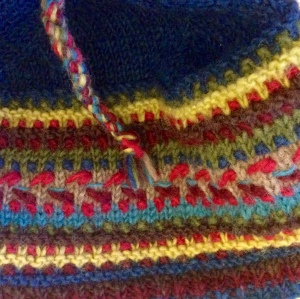Here is a piece I submitted to the Labor Herald about my essential role in public life. Alex Brooks, one of The Lab‘s editors, who has also ridden the 483 from Strathfield station, told me he loved it and posted it the next day. So yes, I’m famous. But most importantly…for one brief moment I had an editor, and that editor caused my work to read better than I can make it read all on my own. So I am reposting this with thanks. For Alex, and my friend Wendy, and all the editors, all the time.
Caveat: Bob Carr and Kim Beazley, my father and Sydney Buses may remember this differently.
It is seventeen years ago. With my daughter a babe in arms, the question of Injecting Room trials in NSW is a hot topic. I am completing a Masters in Public Health at the University of Western Sydney, a true believer in harm minimisation. About the same time, with the 1998 federal election looming, then Premier Bob Carr hits the streets with then Leader of the Opposition, Kim Beazley.
In Burwood for the morning, I see a gaggle working their way down the main street. Is that Bob Carr walking into a delicatessen with Kim Beazley? And other people I cannot recognize? Here’s my chance. I hoik my babe onto my hip.
The young thing only has a few words but one of them is a designation for automobiles. I enter the roiling fray.
“Mr. Carr, Mr. Carr!”
My voice is raised above the jovial hustings banter. “Did you know that my daughter’s favourite word at the moment is your name?”
“What …‘Bob’?” says Kim. Everyone laughs.
The Premier looks at the two of us.
“Mr Carr,” I take a breath. “I wonder if you wouldn’t mind reconsidering the Injecting Room trials.” The crowd falls into silence. Bob is really looking at me now, my baby on my hip. Mother and child. I cover her soggy, wobbly torso with my hand. “It’s just…I would like to know my daughter had somewhere safe to go.”
Bob stands silently for a moment, then speaks. I am taken aback by his gentle respect, “Yes. OK, I will reconsider.”
I had become a Labor voter on the 483 bus from Strathfield station whilst learning to read. Having successfully mastered all the ‘little letters’, this bus trip was all about exercising my new talent on that mysterious of secondary alphabetical forms, capital letters.
It is the mid-1970s. Buses have a pull-cord that runs from one end of the vehicle to the other.
The cord is the best part of the bus. From down in my seat the line is clearly out of reach of my stubby four-year-old fingers.
So I let my eyes travel along the rubbery cable until they reach a set of letters at the front of the bus:
DO NOT TALK TO DRIVER
BUS IS IN [can’t read it].
“Dad. What word is after ‘driver’?”
“’’Whilst’,” he says. “It means ‘when’.”
“What about the last word?”
“’Motion’,” he says. “That means ‘moving’. So he doesn’t get distracted when he is driving.”
I practice it a little:
DO NOT TALK TO DRIVER WHILST BUS IS IN MOTION.
Fair enough.
But there is another set of capitals:
NO EATING OR DRINKING
ON [something] TRANSPORT.
“’Public’,” says Dad.
“What does ‘public’ mean?”
“Well. You need a lot of money to buy a bus, don’t you? I can’t afford a bus,” he points, “And that guy over there can’t afford a bus, but if we all put our money together we can buy one. So that’s what we do in Australia. We all put a bit of money in, and together we buy things. If something is ‘public’ that means that everyone owns a share of it.”
“So we own a little bit of this bus?” I like the idea. I have already decided to grow up to be a bus conductor, so this tidbit of information seals my fate as collectivist.
I look out the grubby sliding windows and watch the stubby houses of Wallis Avenue stream past. I own…this bus!!
I look up. That glorious pull-cord that I cannot yet reach, I own a bit of that too.
Dad is on a political roll. “And the government runs it for us. The government runs a lot of things for us that we would never be wealthy enough to own ourselves. But together, if we put our money together, we can have them. Hospitals, roads, banks. We even own an airline!”
That was in the mid-70s.
And in the mid-90s, I am still believing. I am believing that together, we can own and run heroin injecting rooms. And people will not need to inject in unsafe places. Harm can be minimized. After making my request of the NSW Premier I say thank you and step back out the front door of the deli, civic duty performed. I remind myself that just to gain an audience with power is enough. I have done what I can.
The next day, I am sure it is the next day, surrounded by the soft, human aromas of domesticity and infant care, I turn on the wireless and Premier Bob Carr is on ABC local radio announcing the approval for the injecting room trials.
I turn to my oblivious, dribbly daughter, marvel at the power of an engaged voter and ask: Do you see what, together, we can do?
This article was first published 26 August, 2015 in The Lab.

